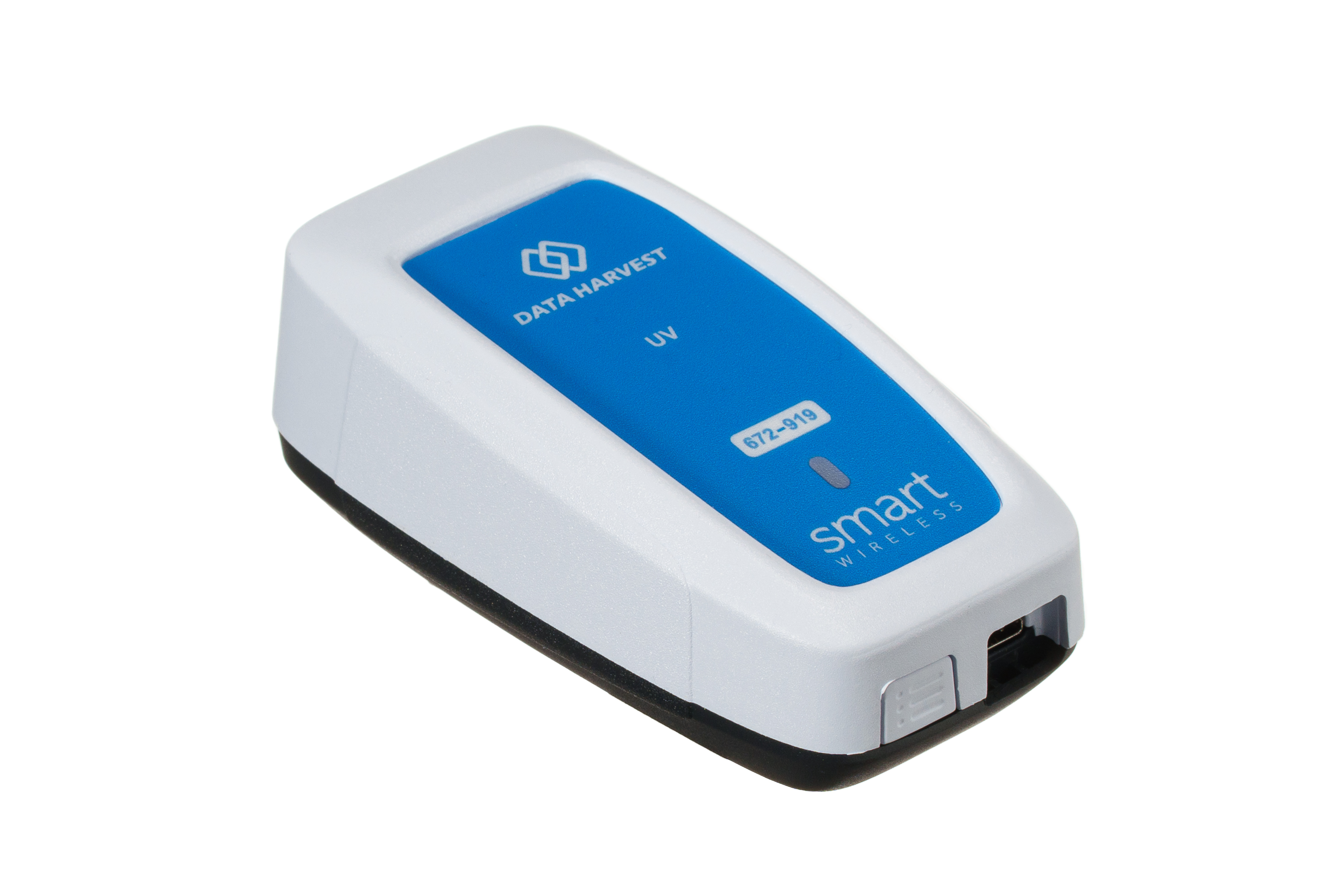Introduction
Thank you for purchasing the Smart Wireless UV Sensor. We pride ourselves on producing high quality products that meet with the demands of the busy classroom environment. If you have any problems using this sensor, please read this documentation in full before contacting the Data Harvest support team.
The Wireless Ultraviolet sensor will measure the intensity of electromagnetic radiation in the ultraviolet (UV) A and B bands. The Sensor uses a photodiode that is sensitive to UV in the range 221 nm to 358 nm. It has maximum spectral sensitivity at 280 nm. It has a field of view of approximately 40 degrees either side of centre.

Overview
The Smart Wireless UV Sensor is USB and Bluetooth compatible. Using Bluetooth, a sensor can connect to mobile devices, tablets, laptops and desktops.
The unit for ultraviolet irradiance is W m-2. Measurements can be recorded at three levels using either a Slow or Fast response range.
- The slow response ranges are 0 - 500 mW m-2, 0 - 5 W m-2 and 0 - 50 W m-2
- The fast response ranges are 0 - 500 mW m-2, 0 - 5 W m-2 and 0 - 50 W m-2
The slow response is the most commonly used range and is suitable for use in most ultraviolet investigations. The response has been smoothed to remove rapid fluctuations of UV.
The fast range is used to show mains frequency ultraviolet fluctuations. These variations in UV intensity can be a source of interference for general work.
The range is shown in Devices in the EasySense software.
The Ultraviolet Sensor measures UV light intensity as irradiance in W m-2. There are other ways that UV intensity and exposure are measured. e.g.
- The Ultraviolet Index (UVI), which is a measure of the solar ultraviolet (UV) intensity at the Earth's surface relevant to the effect on human skin. The higher the UV index number, the greater the penetrating power of the UV radiation and the more likely the damage to skin.
- The Effective UV Dose is directly related to the onset of sunburn and is an integral of the Effective UV Intensity over the exposure time. The dose unit is called MED or Minimal Erythemal Dose (minimum erythemal dosage units per hour).
Both the UVI and the MED/hour units take into account the erythemal response curve for reddening of skin. The response curve follows the varying sensitivity of the average person to different wavelengths. Skin sensitivity decreases rapidly over the UV-B range (approximately 100 times less sensitive every 20 nm) and decreases less rapidly over the UV-A range (approximately half as sensitive every 20 nm).
The Ultraviolet sensor does not have wavelength weighting corresponding to the erythemal action spectrum so the readings cannot be converted to the UVI or MED/hour units.
